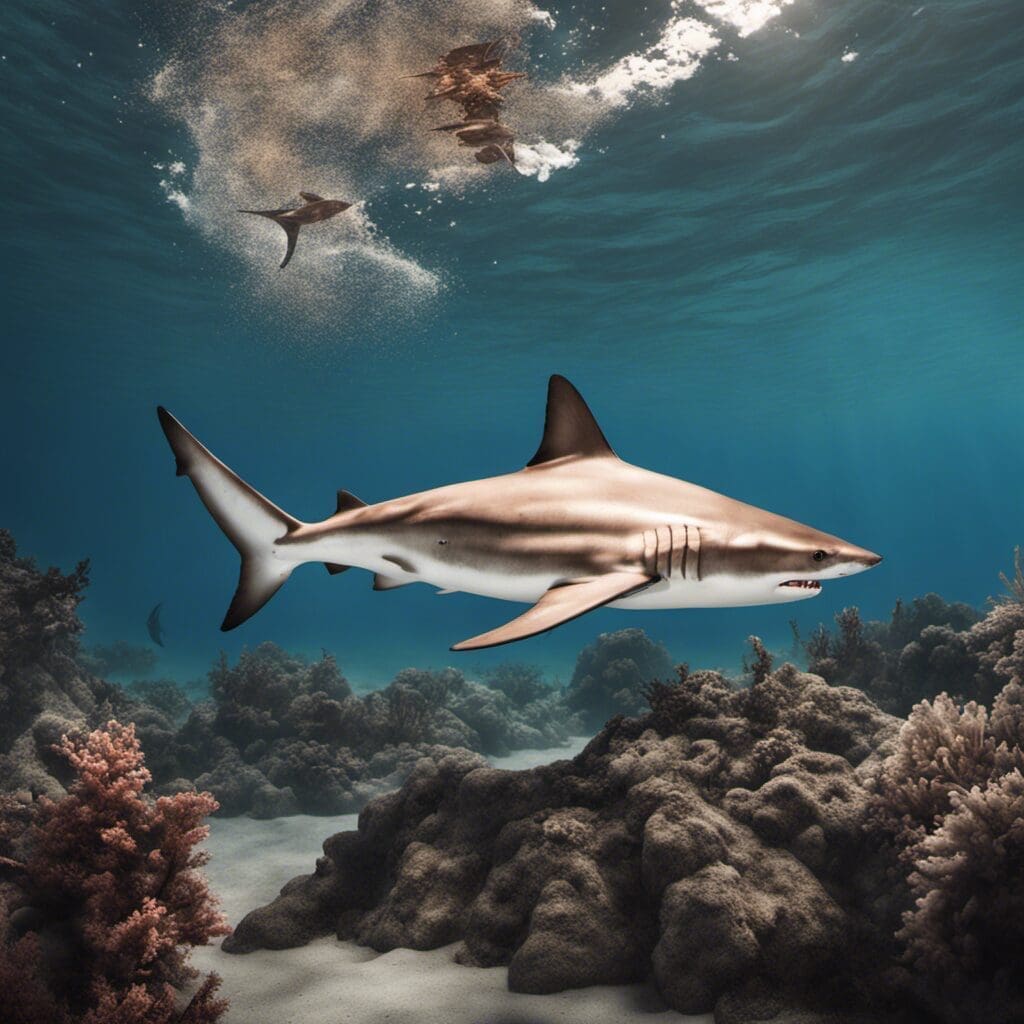Introduction
The Blacktip Shark (Carcharhinus limbatus) belongs to the family Carcharhinidae, also known as requiem sharks. Known for their distinctive black-tipped fins, these creatures inherently display the nature’s love for aesthetics and balance.
Conservation Status
The Blacktip Shark is currently listed as “Near Threatened” on the International Union for Conservation of Nature (IUCN) Red List. While there are no specific conservation efforts targeting this species at present, it benefits from general shark fishing limitations and regulations in many parts of its range.
Statistics
| Average | Range | |
|---|---|---|
| Length | 1.5 m | 0.8 – 2.8 m |
| Weight | 30 kg | 8 – 65 kg |
The average lifespan of a Blacktip Shark is estimated to be around 12 years, with some individuals reported to live up to 20 years.
Distribution
Blacktip Sharks are found in warm coastal waters all over the world. They are particularly common in the Gulf of Mexico, the Caribbean Sea, the Mediterranean Sea, and off the coast of Australia. These sharks usually migrate towards the equator during the winter and away from it in summer.
Habitats
Blacktip Sharks can be found in saltwater, brackish water, and occasionally freshwater. They typically live at depths between 0 and 64 meters, preferring temperatures between 12°C and 27°C.
When and Where to See
The best time to see Blacktip Sharks is usually in the summer when they move towards cooler waters. They are most active during daylight hours.
Best Fishing Locations
- Florida Keys, United States
- Gold Coast, Australia
- Cape Hatteras, United States
- Baja California, Mexico
- Lighthouse Point, Bahamas
- Galapagos Islands, Ecuador
- Port Elizabeth, South Africa
- Hilton Head Island, United States
- Biscayne Bay, United States
- Margaret River, Australia
General Tips
Blacktip Sharks are usually found near the surface and often gather near river mouths, bays, and mangroves. They are most likely to bite when there are smaller fish in the area, as they are attracted to their movement.
How to Catch
Blacktip Sharks are primarily caught using fresh bait such as squids, sardines, or small bonitos. Effective fishing techniques include trolling, surfcasting, and even fly fishing. Dusk and dawn are reported to be the best times for Blacktip Shark fishing.
Identification Guide
Blacktip Sharks are characterized by their pointed snouts, long gill slits, and black-tipped fins. They are relatively slender and have a distinctive grey-blue color on their backs and sides, which fades to a pale white underbelly.
Culinary
Blacktip Shark meat has a mild flavor and a firm, lean texture. It is commonly grilled, baked, or steamed. Nutritional information includes high protein content, low fat, and rich in vitamins.
Additional Information
Blacktip Sharks generally feed on small, bony fish, squid, and crustaceans. Their natural predators include larger shark species. Also, humans pose a significant threat, primarily due to overfishing and habitat loss.
There aren’t any specific cultural or historical significances associated with Blacktip Sharks.
References and Further Reading
- Florida Museum
- IUCN Red List
- Shark Research Institute
The above-mentioned sources provide detailed information on Blacktip Sharks. For a more comprehensive understanding of Blacktip Sharks, interested parties are advised to read through these sources and more.

